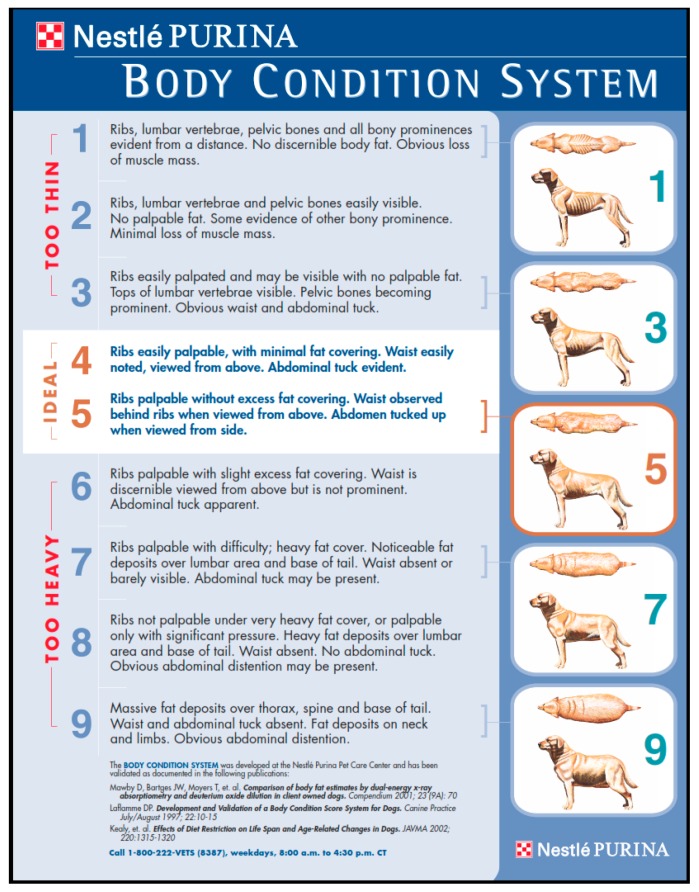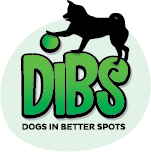A healthy weight is so important in our lives for so many reasons – mobility, organ function, energy. This applies to humans but is very important with the pets in your home. It is your responsibility to help keep your dog at a healthy weight.

We all gained a bit of weight during Covid, but the time has come to take back your control in your life: lots of walks, eat well, proper hydration and regular vet exams are a must for the pets in your life (not a bad tip for the humans too)
At your annual vet exam, your pet will be weighed and the vet may suggest they drop a few pounds. If they don’t mention it, don’t be afraid to ask, as it’s in everyone’s best interest to be aware and manage any weight issues.
If someone says “oh your dog may be a bit chunky” – don’t justify it or dismiss it. It’s not a personal attack, but likely intended out of concern.
You want your dog to live a long and healthy life and sadly, there are serious issues than stem from a dog being overweight:
- arthritis and mobility issues
- cancer
- heart issues
- bladder stones
- decreased lifespan

Toys
Require your dog to work a little for their food. A snuffle mat, a puzzle or a treat ball are great ways to dispense food.
Your dog should never be getting treats for no reason, or just for being cute (as tempting as it is). Ensure each treat is earned and don’t toss treats out like candy!
Dog Food
- Regardless of your dogs weight, you always want to be shopping for the best food for your dog
- Learn how to read the labels. Check out the top 3 ingredients to see if they seem “good”. Even the name of the product can give you some clues as to content. From this site, they state “If the food begins with the meat ingredient in the name, then the product must have at least 95 percent of that meat. “Beef Dog Food,” for example, would have to meet this rule. If the product has the words “dinner,” “entree,” “platter,” or “formula,” the ingredient named needs to be at least 25 percent of the product. Using the previous example, now changed to “Beef Dog Food Dinner,” the food goes from 95 percent meat content to anywhere from 25 to 95 percent content. If there is a combination of meats, such as a “Chicken and Fish Entree,” the product must have a combined 25 percent of both meats, but more chicken than fish, since chicken is named first. The amount of the meat in these cases would be indicated by their place on the ingredients list.”
- Check out this same link to understand the difference between by-products (fine) and fillers (not fine)
Treats
If your dog is heavier, change your treat game. Switch to apples, carrots (frozen carrots are a great alternative to stick-type treats), lower fat yogurt.
What to avoid
Watch for ingredients! Xylitol is found in some peanut butters. Google what your dog should never have: you may be surprised to see what is on the list! Here is one google result to review.
 Body Shape
Body Shape
Be sure you review the chart included here. View your dog from a few different angles and don’t be hesitant to feel for ribs. A few pounds overweight on a dog is a lot!
What you can do to help?
- Know your dogs weight and their ideal weight. Measure and monitor
- Keep active. Peeps should be walking 10,000 steps a day, and your dog will happily partake!
- Understand begging vs legit hunger
- Avoid too many treats or table scraps
- Customize your dogs food plan. There is a good chance you will chat with friend or family, and you will hear “this is what I do for my dog”. Absorb that info, research it, learn from it and if you want, take it into consideration when shaping your own dogs diet. (Don’t blindly just do what they do – dogs are different in so many ways)
- Create a plan to implement slowly
- Get on board! We can all be a bit healthier, right?
Resources
- https://petobesityprevention.org/
- https://www.purinainstitute.com/centresquare/nutritional-and-clinical-assessment/purina-body-condition-system
- https://www.akc.org/expert-advice/nutrition/8-ways-to-help-your-overweight-dog/
- https://vcacanada.com/know-your-pet/obesity-in-dogs
